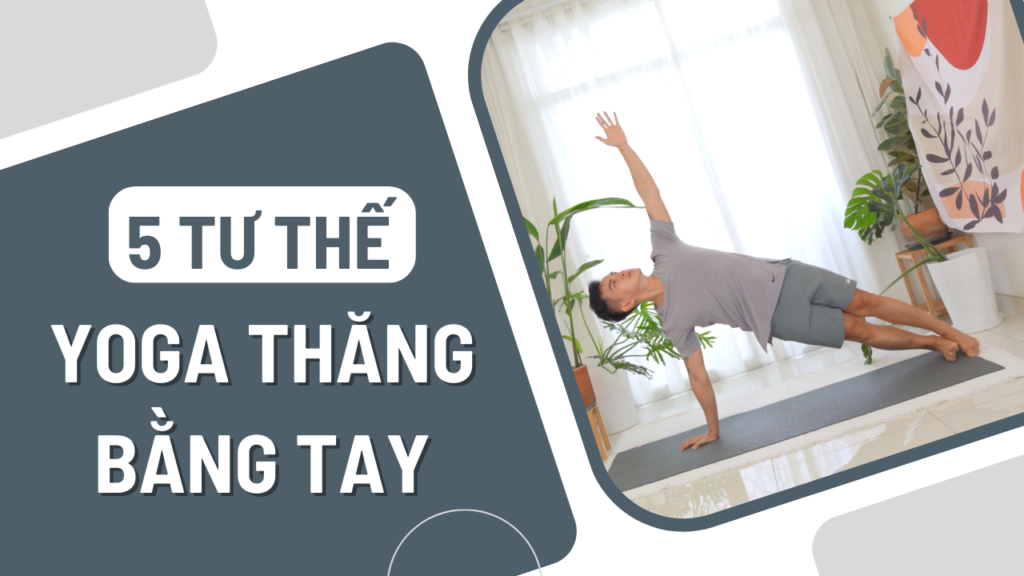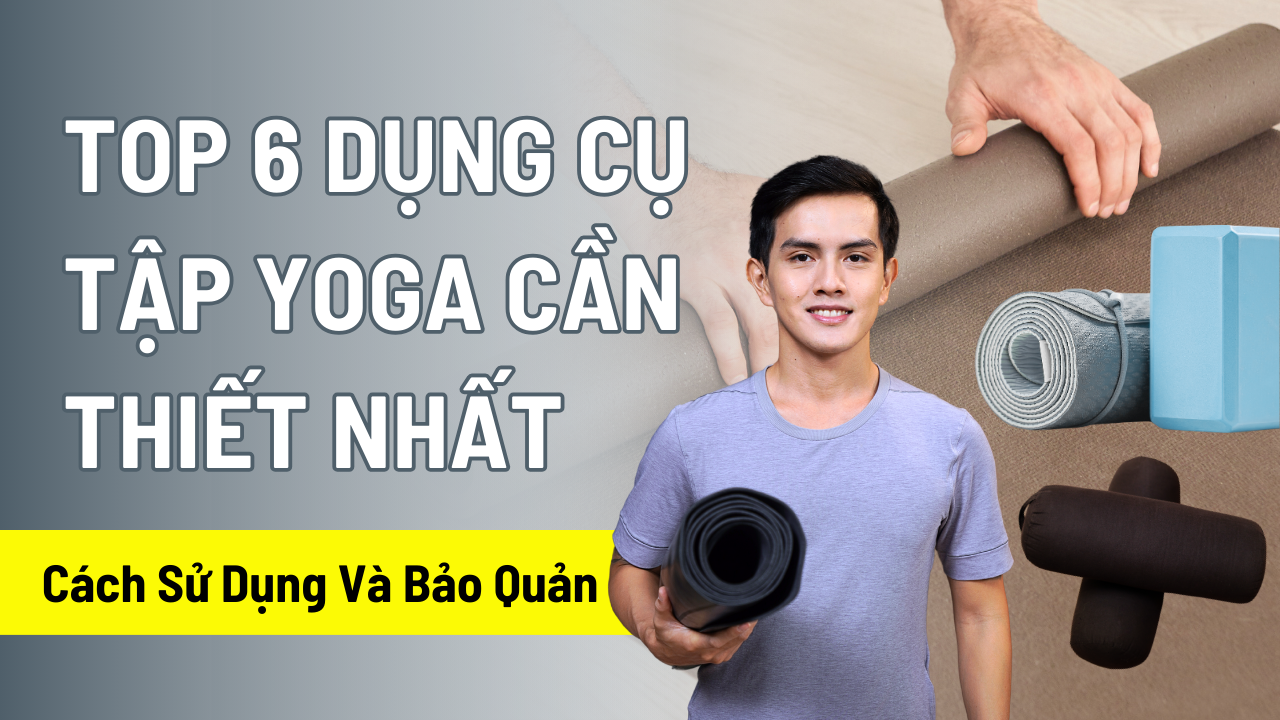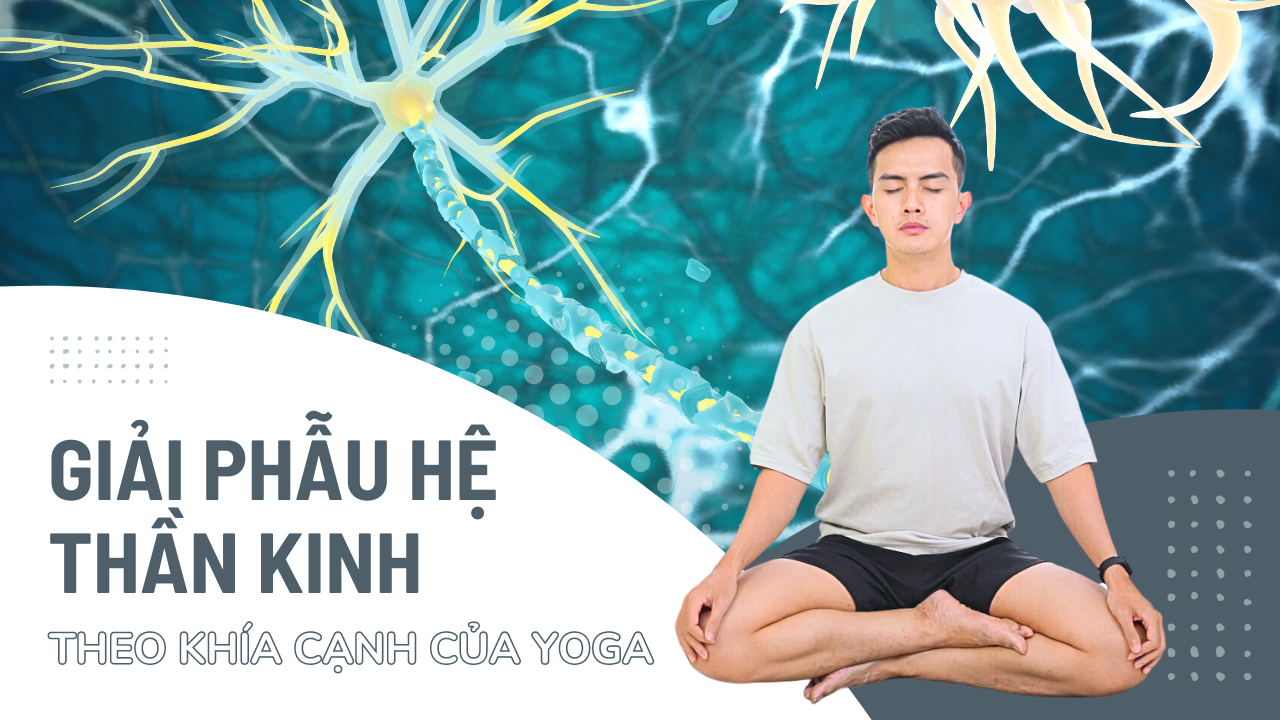Among the types of Yoga postures, hand balancing postures are popular because of their challenge and many benefits they bring to health and spirit. In this article, we will explore together the best and most popular hand-balancing Yoga movements, helping you increase your strength and flexibility.
Benefits of hand balancing yoga postures
Hand balance yoga poses are not only beautiful yoga moves, but also provide a series of wonderful benefits for both the body and mind.
- Enhance muscle strength: Hand-balancing yoga movements put great pressure on the arm, shoulder and back muscles, helping to increase muscle strength and comprehensive muscle development.
- Improved flexibility: Performing these poses requires flexibility and alignment of the body, thereby helping to improve flexibility and mobility.
- Enhanced stability: Regular practice improves stability, increases muscle control and balance in difficult positions.
- Reduce stress and anxiety: Focusing on the basics and practicing slow breathing helps reduce stress, anxiety and bring about a comfortable psychological state.
- Stimulate blood circulation: These positions often stimulate blood circulation, helping to improve the supply of nutrients and energy to muscle parts.
- Enhance thinking: Concentration and control during hand-balancing yoga poses help strengthen thinking and increase concentration.
Crow yoga pose
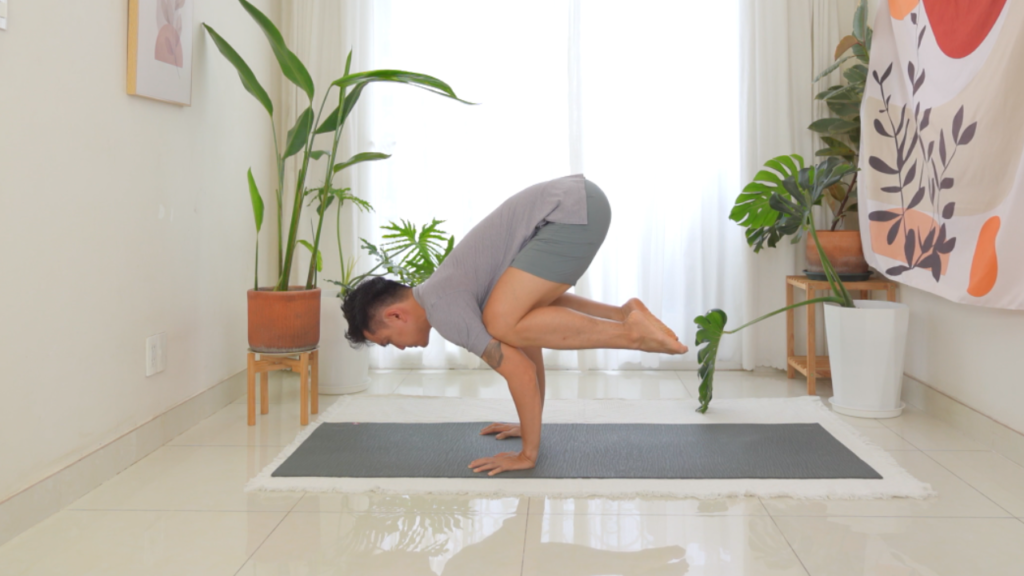
Benefit:
Crow yoga pose, also known as Bakasana, is not only a beautiful yoga move but also offers many comprehensive health benefits. With this position, the person focuses active force on the arms, increasing muscle strength and stability. At the same time, maintaining balance on the arms stimulates blood circulation, improves concentration and reduces stress.
Implementations:
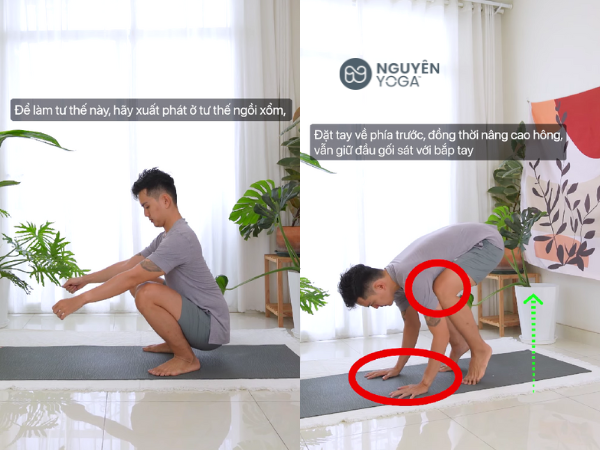
- Place your hands forward and raise your hips, still keeping your knees close to your biceps.
- Bend your elbows slightly, lift your heels, lean forward, use the resistance of your forearm bones to bring your body upward, activating your core muscle group to prepare for a balanced position.
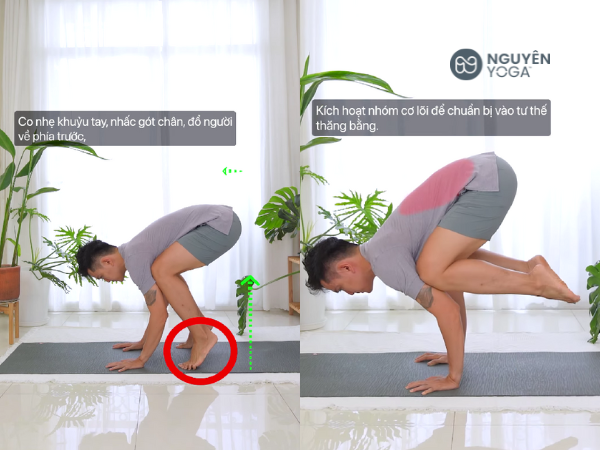
- When getting into position, keep your gaze straight down at 1 point, lock your shoulder joints and balance here.
Plank pose
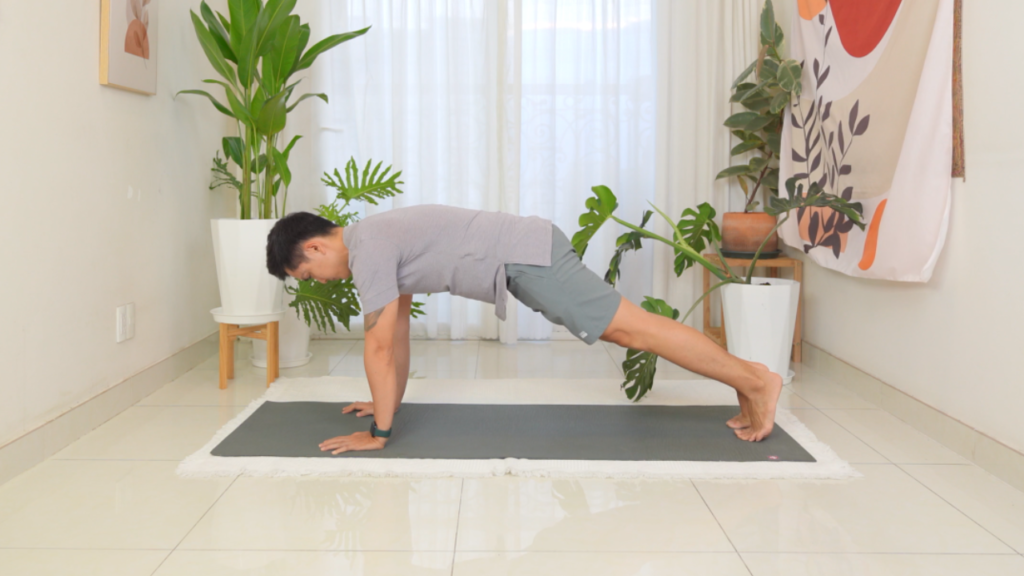
Benefit:
This pose helps strengthen the core muscles, especially the abdominal muscles, back muscles, pelvic floor muscles and diaphragm. In addition, it also strengthens the shoulder joints, arms, chest muscles, trapezius muscles and the entire lower body. This pose also helps increase concentration and balance of the body.
Doing:
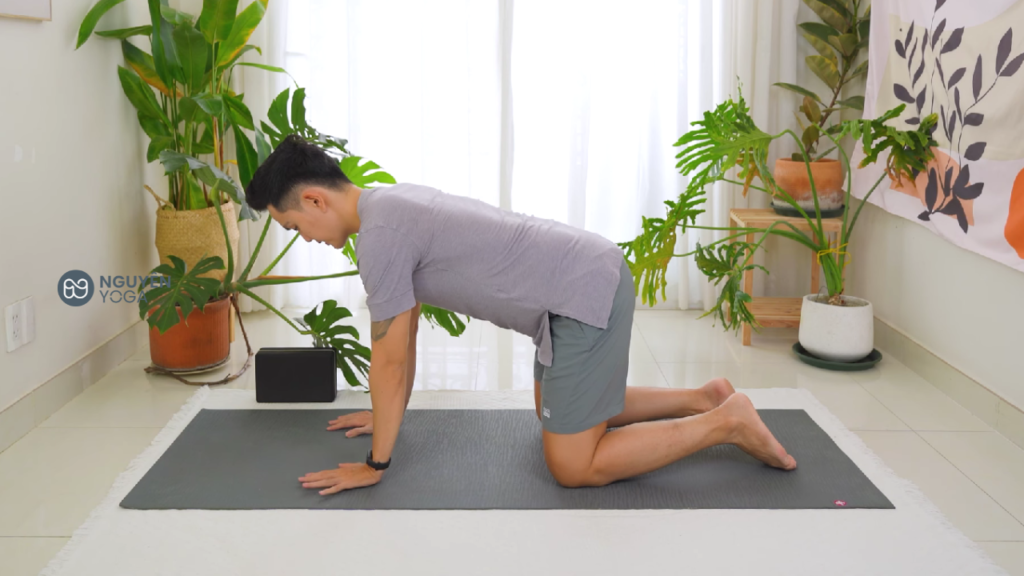
- To do this pose, start in table position, resting on your hands and knees.
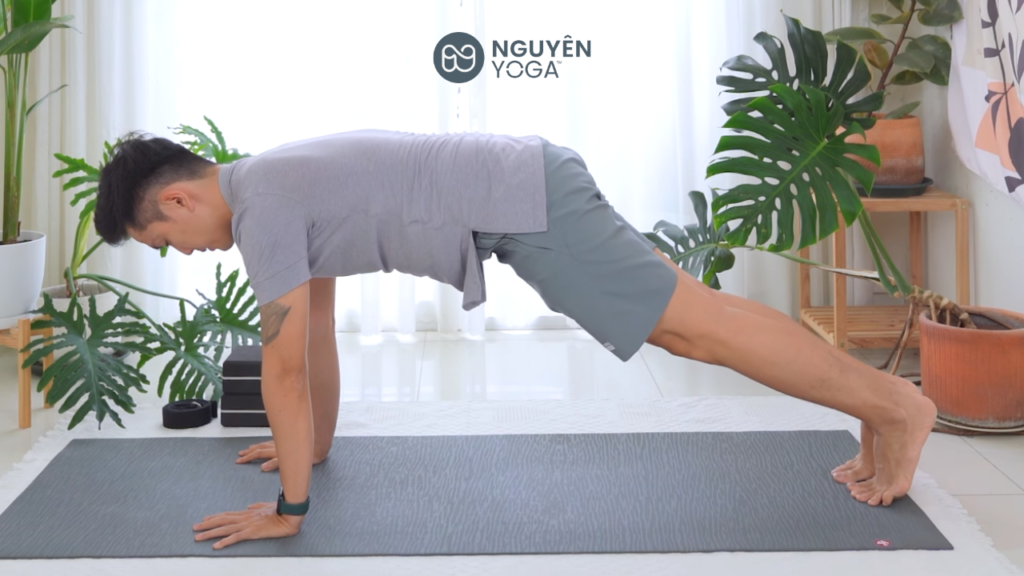
- Keep wrists and shoulders in a straight line. Then lift and straighten your legs.
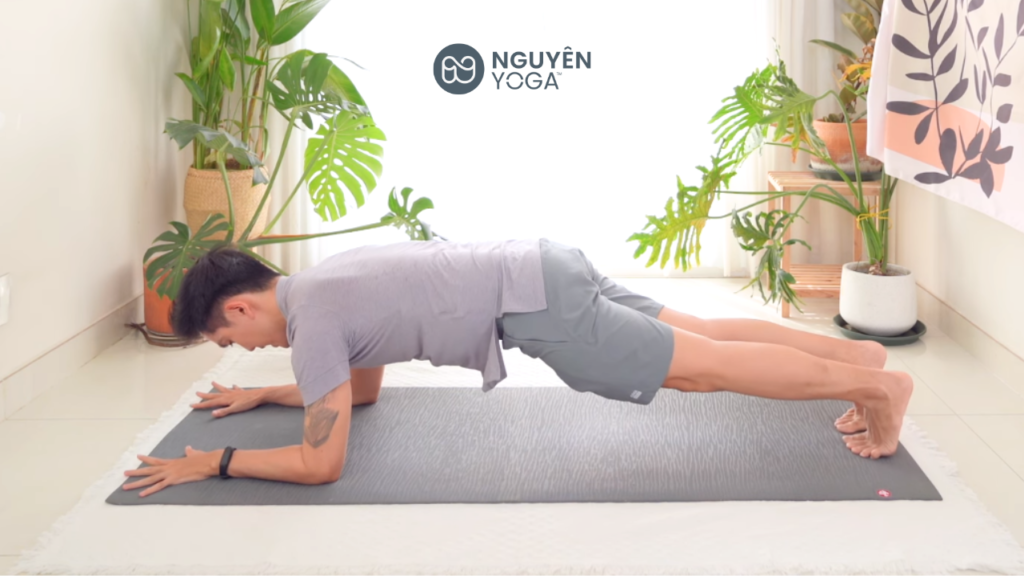
- Next, tighten your abdomen, buttocks and back, keeping your back and body parallel to the floor.
Side Plank position
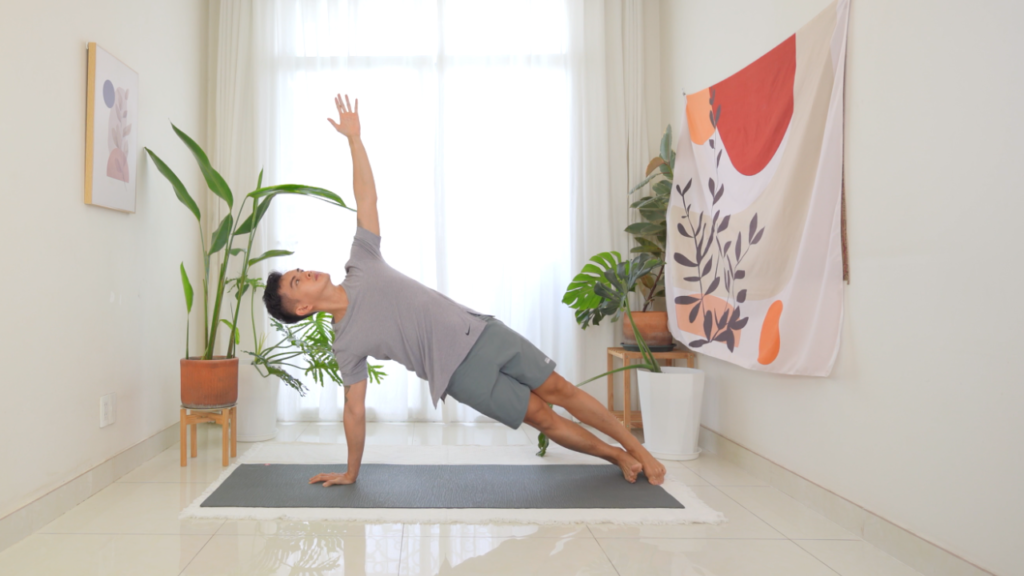
Benefit:
This pose helps increase strength in your wrists, arms, and shoulder joints, making your hands stronger and firmer.
In addition, it also affects core muscle groups such as abdominal muscles, back muscles, diaphragm, and muscle groups around the hips and pelvis, as well as thigh muscles, helping your spine become healthier, limiting the back pain condition.
Doing:
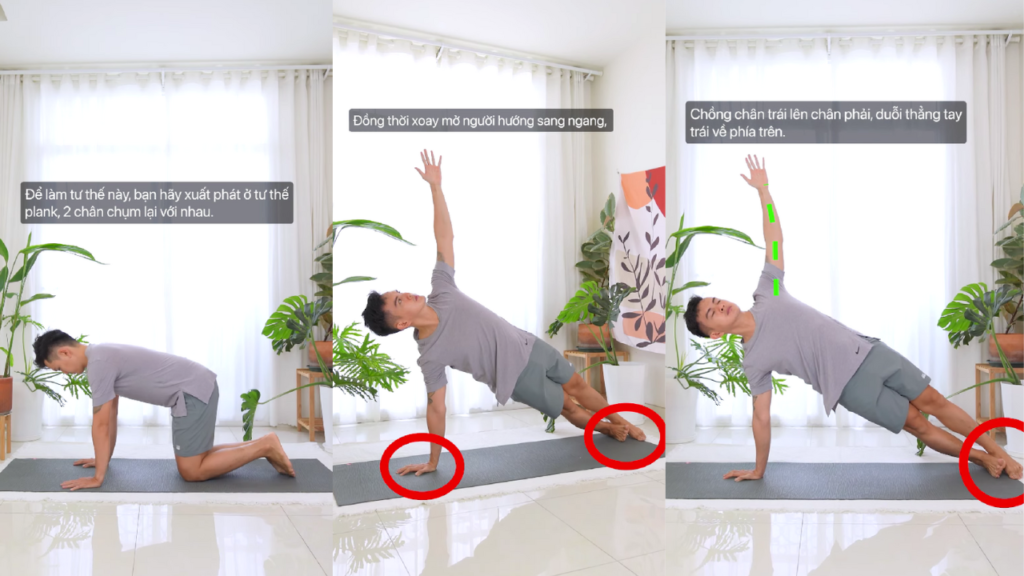
- To do this pose, start in a plank position with your feet together.
- Transfer your weight to your right hand and the outside of your right foot. At the same time, turn your body to the side, stack your left leg on top of your right leg, and stretch your left arm upward.
Peacock Yoga Pose
Benefit:
- Improve pelvis and thigh muscles: This pose helps improve the flexibility and mobility of the pelvic muscles, while also strengthening the thigh muscles. This is especially important for people who often have to sit for long periods of time, such as office workers and drivers.
- Internal organ massage: This exercise can positively impact internal organs such as the stomach, liver, and intestines. Massaging this organ helps reduce symptoms of indigestion and constipation, providing benefits to the digestive system.
- Increase arm and wrist strength and flexibility: Not only does it focus on the lower muscles, but it also increases strength and flexibility in both arms and wrists. This is helpful for people who need balance and strength in daily work.
- Improve balance and posture: This posture plays an important role in improving balance, helping to improve body shape. This not only creates a beautiful figure but also supports spinal health.
- Reduce fatigue and increase concentration: The peacock yoga pose not only helps eliminate feelings of fatigue and fatigue but also promotes emotional balance. This can help increase concentration and a sense of well-being.
Doing:
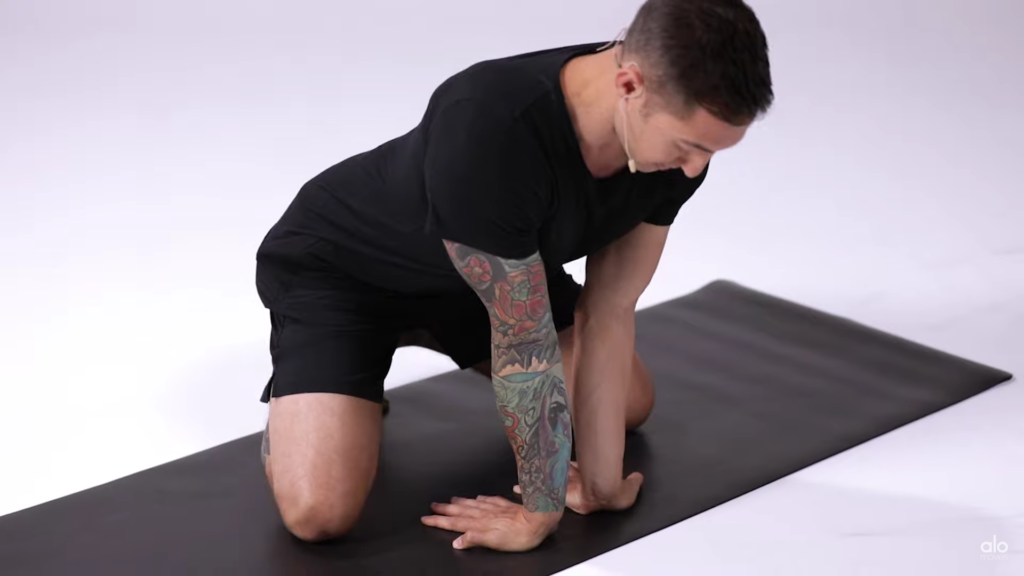
- Start in a kneeling position: Sit up on your knees, open your legs on both sides as comfortably as possible, bring your toes back and touch each other.
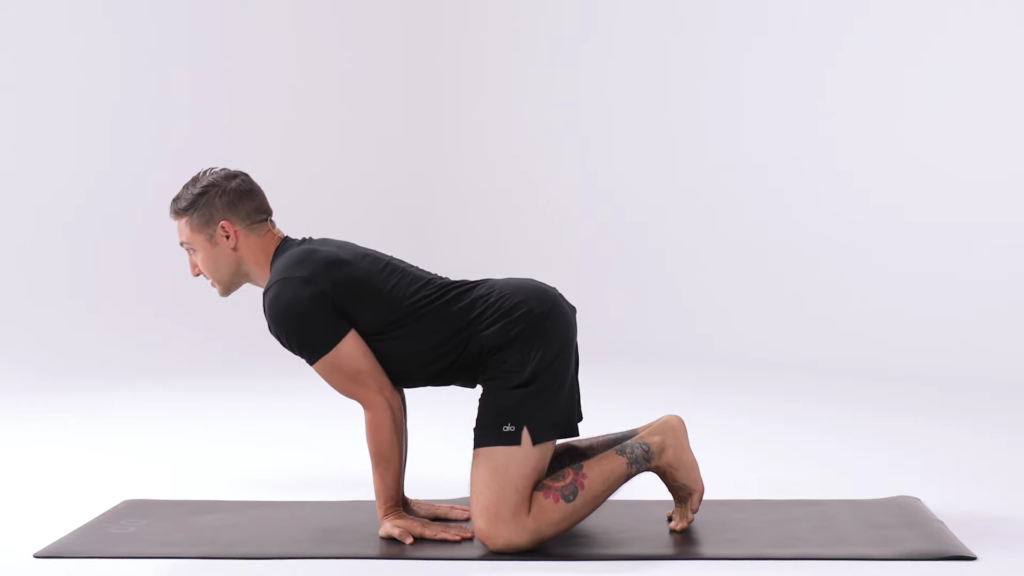
- Bring your elbows and lung areas together: Lean forward and place both hands on the ground, fingers facing you. If it's more comfortable, you can place your hands at a slight angle facing away.
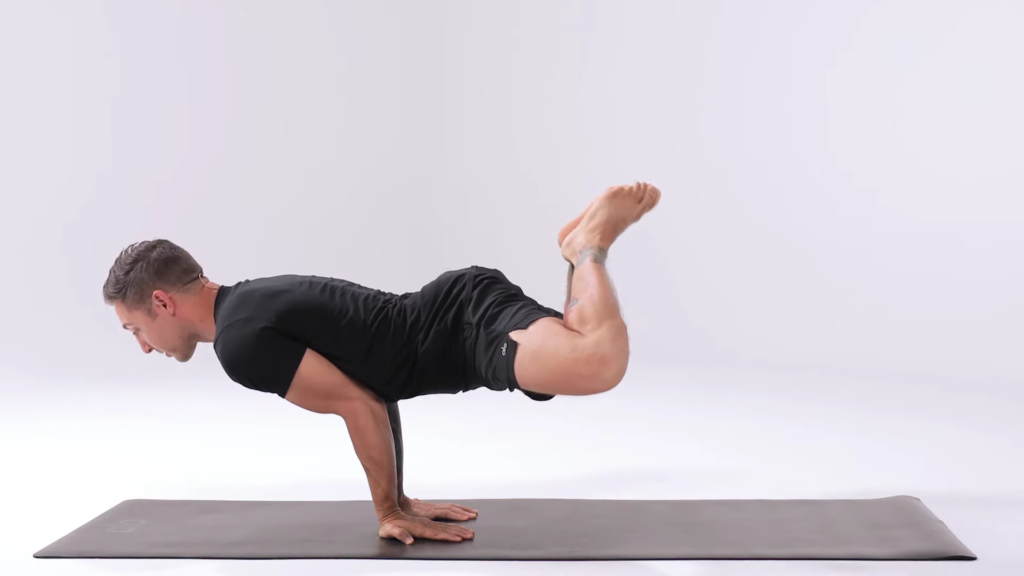
- Create a "platform" for your body: Bend your arms and lean forward to create a "platform" for your body. Make sure your chest is lifted and adjust your back leg slightly.
- Raise your knees off the ground: By pushing from both hands, lift your knees off the ground. Keep your body in a comfortable and stable position.
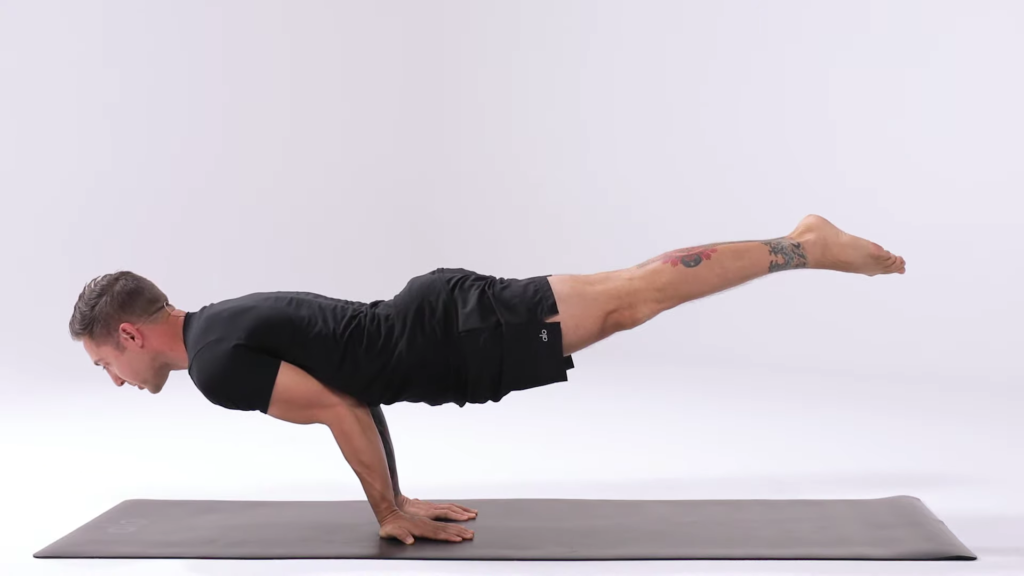
- Leg extension (if comfortable): If you feel comfortable in the previous pose, go further by extending your legs back to do the full variation of peacock pose.
Wild dance pose
Benefit:
Camatkarasana stimulates the anahata (heart chakra), associated with love, peace, acceptance and confidence. This chakra also helps keep the mind free from fear. Additional mental benefits of camatkarasana include:
- Treat mild depression
- Fatigue treatment
- Improves sense of balance
- Helps mental clarity
Doing:
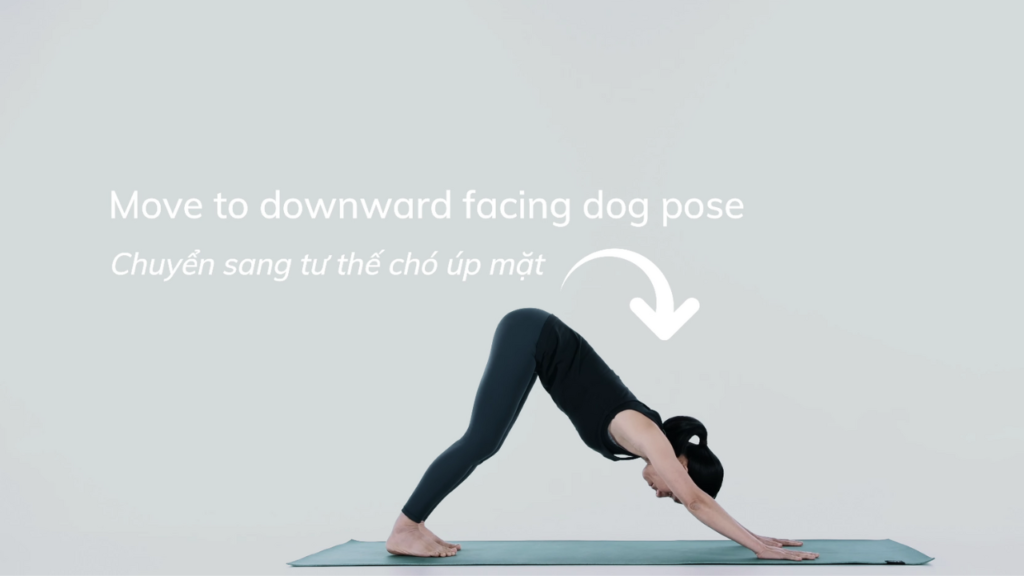
- Start in Adho Mukha Svanasana (Head Down Hanging Dog) pose.
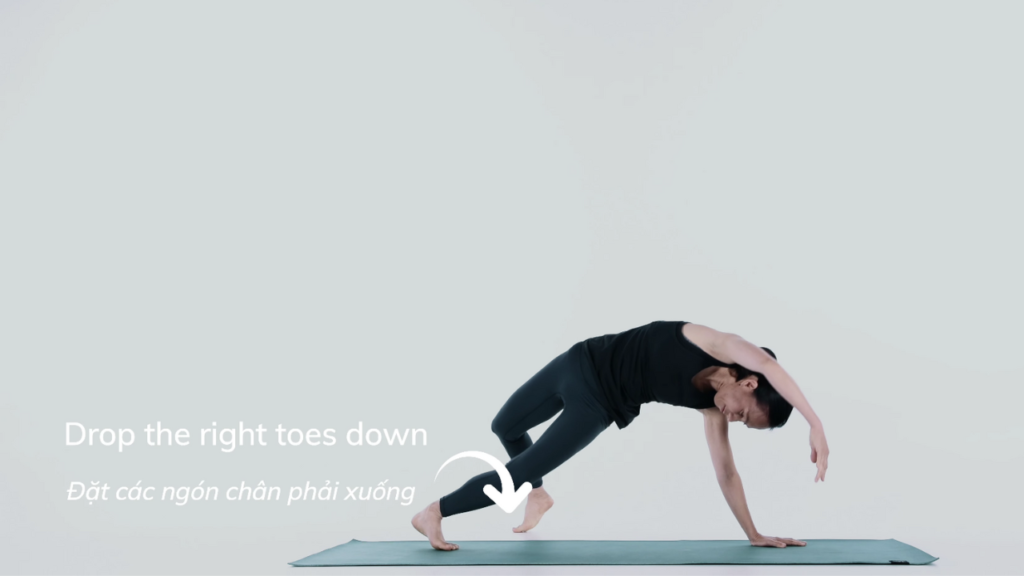
- Shift your weight to your right hand and roll your body toward the outside of your right leg like Vasisthasana (Side Plank Pose).
- While breathing, raise your buttocks with gentleness, keeping strength in your right hand
- Keeping your left knee bent, place your left foot back and place your toes on the floor.
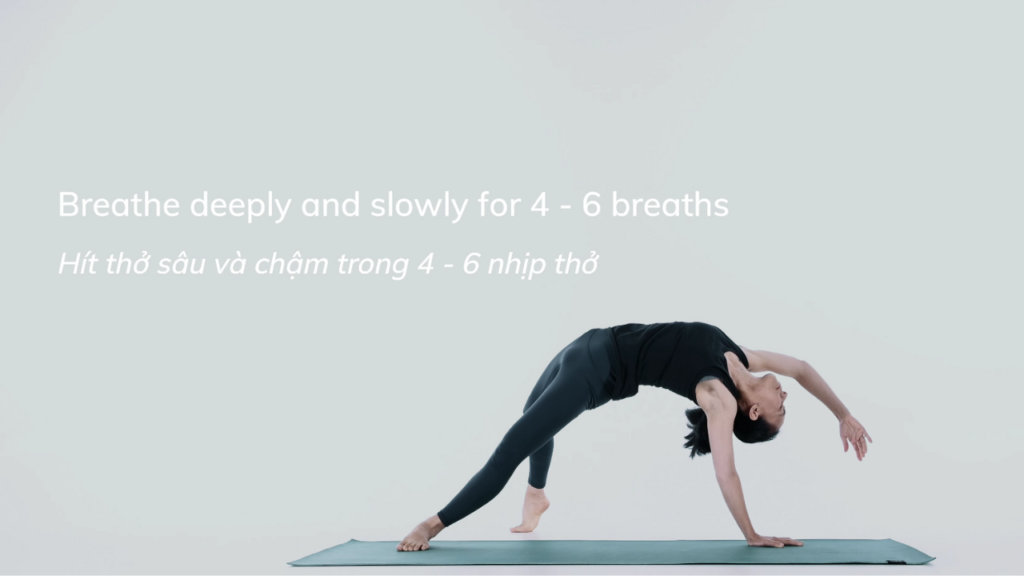
- Roll your upper back backward and, while breathing in, lift your buttocks higher until you roll your back more into a backward arch with your right leg firmly on the ground.
- Continue breathing and bend your head back, extending your left arm from your heart and expressing your strength and freedom.
- Hold the pose for about 5-10 breaths, return to Hanging Head Down Dog and repeat on the other leg.
Nguyen hopes that the above sharing will be effective and useful in your process of learning hand-balancing Yoga movements. Besides, there are also many articles about health and Yoga at Nguyen's blog, especially the channel Nguyen's Youtube There are many other useful exercises and movements, please follow and look forward to Nguyen!

